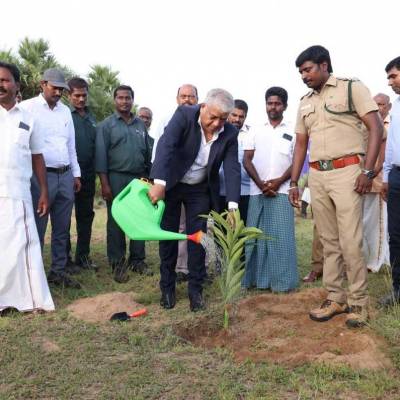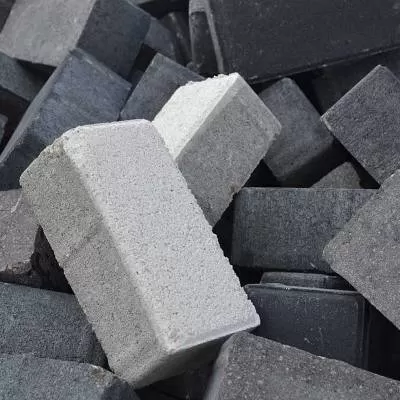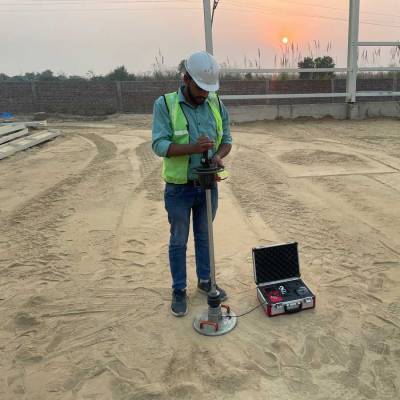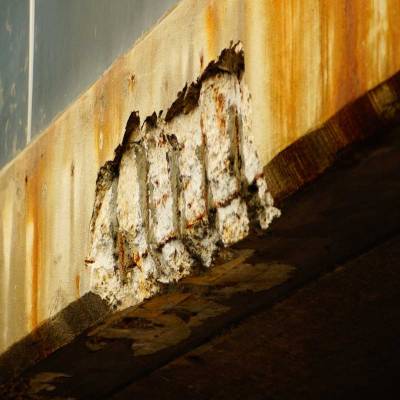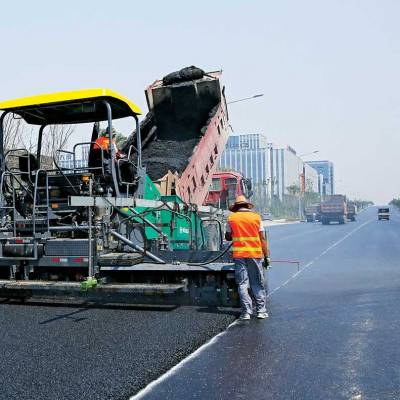- Home
- Building Material
- Concrete
- Here's examining demand drivers for high-capacity concreting equipment, chiller-compatible batching plants, concrete recycling plants and onsite concrete testing

Here's examining demand drivers for high-capacity concreting equipment, chiller-compatible batching plants, concrete recycling plants and onsite concrete testing
- Concreting equipment
- Chiller-compatible batching plants
- Concrete Recycling plants
- Onsite concrete testing
- CR Jyothiraj
- Sany India
- Mixers
- Batching plants
- Trailer pumps
- Boom pumps
- Ashok V Dikshit,Aquarius Engineers
- VG Sakthikumar
- ICEMA
- Schwing Stetter Sales and Services
- Ranjeet More
- Universal Construction Machinery & Equipment
- Mobile Series
- Paver
- ACC
- RDC Concrete
- Chintan Parikh,
What's driving strong double-digit growth in the concrete equipment segment?<br /> 'Increased activity in the infrastructure segment has put the concrete equipment market on a growth path,' responds <span style="font-weight: bold;">CR Jyothiraj, General Manager, Concreting Equipment, Sany India.</span> 'We expect 15-20 per cent CAGR in the next few years across the different segments of concrete equipment Sany offers: Mixers, batching plants, trailer pumps and boom pumps.'<br /> <br /> 'In FY18, we saw 49 per cent growth in turnover over the previous year in the concrete plant segment and 28 per cent growth in the concrete pump segment,' says <span style="font-weight: bold;">Ashok V Dikshit, Director, Aquarius Engineers.</span> 'This year, we are expecting overall 30 per cent growth in turnover driven by road construction and building infrastructure projects. <br /> <br /> In FY20, growth may slow down as ongoing road projects will end, freeing up equipment for other locations and projects.'<br /> <br /> <span style="font-weight: bold;">High-capacity trend</span><br /> Interestingly, Dikshit says higher capacity plants and pumps are the biggest contributors to growth. 'In the batching plant segment, the drivers are units of above 90 cu m per hour capacity, typically 90 cu m per hour and 120 cu m per hour units, which are being taken up by road construction companies to feed pavers suitable for roads of width 4.5 m to 9 m. Pumps of 70 cu m per hour and higher capacity are being taken up by companies constructing buildings of 40 and more storeys, and companies building metros, especially those in Hyderabad and Bengaluru.'<br /> <br /> 'With high-rise construction growing rapidly, we are seeing high demand for Schwing high-capacity concrete pumps, plants and mixers, says <span style="font-weight: bold;">VG Sakthikumar, Managing Director, Schwing Stetter Sales and Services; Convener, Membership Committee, ICEMA; and Chairman, Mechanisation Committee, Builders Association of India.</span> <br /> <br /> In the trailer-mounted concrete pump segment, the SP 8800 pump, one of the world's biggest with 63 cu m concrete output, specially designed for pumping high-grade concrete to a height of above 500 m, has been used with a separate placing boom for Omkar 1973 (293 m height) and for Oberoi's 360 West (280 m height) in Worli, Mumbai and for the Statue of Unity (180 m height) in Kevadiya, Gujarat.<br /> <br /> 'Currently, most of our customers demand batching plants of higher capacity to meet the tight completion schedules of increasingly larger projects,' says <span style="font-weight: bold;">Ranjeet More, Managing Director, Universal Construction Machinery & Equipment.</span> 'Simultaneously, buyers are asking for plants with advanced technological features and control systems to meet their need for high strength, high quality, homogeneous concrete and high-efficiency batching and placing equipment to quickly deliver the concrete to greater heights and distances.' Universal Construction Machinery & Equipment offers four different series of batching plants (Inline Series 22 capable of producing up to 240 cu m per hour; Mobile Series 22, up to 60 cu m per hour; Rover Series, 30 to 60 cu m per hour and Cross Bin Series 22, up to 60 cu m per hour) with three different types of mixing technology (pan mixer, twin-shaft mixer and planetary mixer). Recently, the company also introduced a Universal Heavy Construction Machinery division to cater to special customers' needs for higher capacity batching plant (45 cu m per hour to 240 cu m per hour).<br /> <br /> <span style="font-weight: bold;">Chiller-compatible batching plants</span><br /> Buyers in India prefer concrete batching plants of capacity between 20 cu m per hour and 60 cu m per hour, says Jyothiraj. However, Sany can offer batching plants of capacity up to 360 cu m per hour, which are proven in the global market.<br /> <br /> 'Our preferred capacity of batching plants is 30 cu m per hour and 60 cu m per hour on building sites,' says <span style="font-weight: bold;">Srinivas Mantha, Deputy General Manager, Materials, NCC (formerly Nagarjuna Construction Co).</span><br /> <br /> A recent launch from Universal Construction Machinery & Equipment is the Master Series batching plants of capacity 20 cu m per hour to 60 cu m per hour. <br /> These plants are capable of producing concrete nonstop, more than 5,000 cu m; by virtue of needing a minimal foundation, they can be erected in one day and transported on a standard trailer. 'These can be used with transit mixers as well as directly with pumps,' says More.<br /> <br /> NHAI regulations specifying the temperature of the concrete at the paver have helped boost buyer awareness of batching plants with integrated chillers, or of chiller-compatible plants, says Dikshit. As he explains, to ensure the concrete reaches the paver at the specified temperature (around 27-28&#8451;C) when the ambient temperature is around 40-45&#8451;C, the chiller supplies water cooled to 4&#8451;C to the plant and, sometimes, ice, so that the concrete produced is around 15-21&#8451;C, which can then be transported, typically in a dumper for road construction projects, to reach the paver at the right temperature. 'Introducing similar regulations for contractors taking on state highways would help ensure the quality of state roads,' he notes.<br /> <br /> Outside the road construction segment, the use of chillers appears to be limited. 'Our experience of using chillers is restricted to buildings as most of the roads we construct are bitumen-topped,' shares Mantha. 'For large projects, chillers are mandated where the project size exceeds Rs 10 billion; for smaller projects, where needed, it is easier to buy ice.' <br /> <br /> <span style="font-weight: bold;">Preferred mixers</span><br /> In India, Sany has supplied concrete mixers of 6 to 8 cu m capacity as against the company's global range which goes up to 12 cu m. In this space, the latest Power Take Off (PTO) version concrete mixers of 7 cu m and 8 cu m capacity eliminate the use of a second engine to drive the mixer, says Jyothiraj. Instead, power is taken from the main chassis engine. <br /> <br /> 'We prefer using transit mixers of 7 cu m capacity as these are operationally as cost-efficient as the 6 cu m model, being built on the same chassis while transporting a slightly higher volume,' notes Mantha. 'Mixers of 8-10 cu m capacity cost more to buy and operate.'<br /> <br /> Truck mixer users are conscious of the time spent on filling, discharging and cleaning trucks, notes Sakthikumar. Minimising this time helps save time and money. Stetter truck mixers of 3 to 12 cu m capacity are designed to be low maintenance and offer simple handling. A recent innovation for the Indian market is the transit mixer with pump TMP 32.6, which allows the customer to operate with a single equipment if the construction site is less than two floors and volume of concrete required is small (6 cu m to 10 cu m). <br /> <br /> <span style="font-weight: bold;">Pumping options</span><br /> Conventionally, buyers of concrete equipment evaluate longevity, operator comfort, after-sales support and training, and project scale and schedules,' says Sakthikumar. 'When buying concrete pumping equipment, the concrete mix quality and the building or structure's height also weigh on the decision. <br /> <br /> Software integration through the Schwing Stetter batching plant control panel is important because it simplifies the entire process of concreting and helps the user take full charge of the concrete production process, besides helping to manage inventory, maintenance, quality and, therefore, profitability.'<br /> <br /> Boom pumps are selected for being able to operate in confined spaces in metros and at road project sites, and for offering mounting and climbing options for high-rise building construction, he adds. To cater to these needs, Schwing boom pumps feature a one-sided outrigger system that allows full boom extension with safe operation through integration with boom controls and a 360¦ concrete circular distributor (called separate placing boom).<br /> <br /> The major market in trailer pumps in India is for models of 40 cu m per hour to 80 cu m per hour capacity, notes Jyothiraj. <br /> <br /> In this popular size, Sany has recently launched new-generation concrete pumps in India, even as Sany globally offers trailer pumps of capacity up to 120 cu m per hour. In the truck-mounted boom pump category, the company offers the largest boom pumps in India, which can deliver up to 62 m vertically.<br /> <br /> <span style="font-weight: bold;">Payback time of concrete recycling plants</span><br /> Concrete recycling plants are highly cost-effective with a payback time of eight to ten months, depending on the scale of operations of the user, notes <span style="font-weight: bold;">Ashok V Dikshit, Director, Aquarius Engineers.</span> 'We have supplied recycling plants to ready-mix concrete providers such as ACC and RDC; they are extremely particular about recycling. Regulation would help boost awareness of the utility of concrete recycling plants among real-estate construction companies.'<br /> <br /> At DAICEC, Mumbai, L&T is using crushed recycled concrete made with a Stetter concrete recycling plant as dry aggregate for brand new concrete, notes <span style="font-weight: bold;">VG Sakthikumar, Managing Director, Schwing Stetter Sales and Services; Convener, Membership Committee, ICEMA; and Chairman, Mechanisation Committee, Builders Association of India. </span>'The only preconditions for using crushed recycled concrete are that it should be free from contaminants and slurry water.'<br /> <br /> According to Sakthikumar, 'Recycled aggregate is also increasingly being used in Platinum-rated LEED green buildings that make recycling mandatory.'<br /> <br /> 'RDC Concrete has attempted to recycle waste concrete by crushing set concrete to smaller sized aggregates, but we have mostly found this a nonviable solution,' says <span style="font-weight: bold;">Sumanth Nath, formerly National Sales Manager, RDC Concrete (India). </span>'Instead, at RDC Concrete, the waste concrete generated in concrete labs in the plant, batches of rejected concrete batches and the slurry generated from the cleaning of transit mixers are generally used to make concrete paver blocks that are sold to road contractors or contractors for use as back filling in foundations, especially in states like Kerala where soil dredging for back-filling is prohibited.' <br /> <br /> <span style="font-weight: bold;">Cost of testing concrete onsite</span><br /> Concrete testing instruments play a role onsite, where they can help ensure the built structure is of the desired strength, and in factories making concrete products such as AAC blocks, paver blocks, manhole covers, etc, says <span style="font-weight: bold;">Chintan Parikh, CEO, EIE Instruments.</span> Among the most popular concrete testing instruments, he cites slump cones, compression testing machines, concrete test hammers, and ultrasonic pulse velocity monitors.<br /> <br /> 'Establishing an onsite concrete testing laboratory for non-destructive testing costs about 0.1 per cent of the project cost,' says<span style="font-weight: bold;"> Srinivas Mantha, Deputy General Manager, Materials, NCC (formerly Nagarjuna Construction Co).</span> 'It is essential to buy only IS-certified instruments and moulds.'<br /> <br /> <span style="font-weight: bold;">Compression testing machines: </span>These measure the compressive strength of a 15 cm + 15 cm concrete cube cast onsite using a cube mould and vibrating table. 'Compression testing can help drive bottom lines by detecting, for example, if the cement quantity in the concrete mix is too high,' says Parikh. 'Even a 1-2 per cent saving of cement for a ready-mix concrete provider would translate into huge savings.' <br /> <br /> 'To test the workability, consistency, setting time, air content and other variables of concrete utilised for a structure, we recommend high stiffness compression machines satisfying the EN and other International Standards, which test concrete cubes, cylinders and blocks,' says Ranjeet More, Managing Director, Universal Construction Machinery & Equipment.<br /> <br /> RDC Concrete (India) uses computerised compression testing machines from brands such as Aimil. <br /> <br /> <span style="font-weight: bold;">Slump cones: </span>'By testing the consistency or flow-ability of concrete freshly transported concrete onsite, slump test cone apparatus helps to see the end product at site before it is poured,' says <span style="font-weight: bold;">Sumanth Nath, formerly National Sales Manager, RDC Concrete (India).<br /> <br /> L-box/Flow table/V-funnel:</span> 'We also use L box test/flow table/ V-funnel tests to gauge the consistency of concrete and its ability to flow in dense reinforcement; this is especially relevant with the widespread use of self compacting concrete in dense constructions and helps determine the mix design of concrete,' says Nath.<br /> <br /> <span style="font-weight: bold;">Concrete test hammer:</span> 'The only equipment that can be used after the concrete has set is the handheld concrete test hammer, also called the rebound test, which we use to gauge the strength of recently cast concrete or the strength of old concrete,' says Nath. 'We prefer digital rebound hammers from Schmidt (Germany) for their accuracy.'<br /> <span style="font-weight: bold;">Ultrasonic pulse velocity monitors: </span>'These are used to check the structure for consistency, air voids, creaks and the diameter and depth of the TMT bars within,' says Parikh. <br /> <br /> <span style="font-weight: bold;">- Charu Bahri</span><br />


